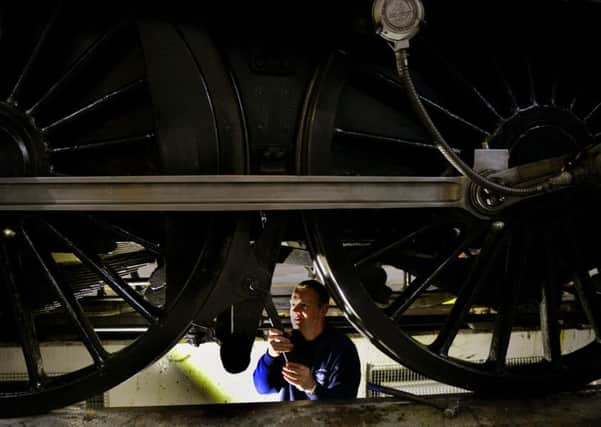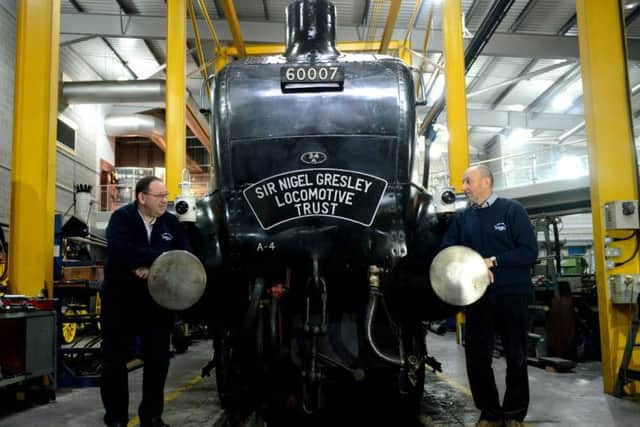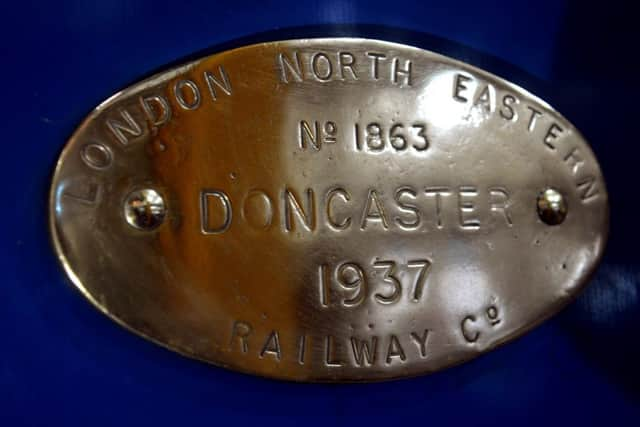Steaming back to York: Nº4498 Sir Nigel Gresley loco


The Sir Nigel Gresley - named after its famous locomotive designer - is to be restored to its former glory at the National Railway Museum in York.
It comes as the museum is gearing up to host a major celebration of the overhaul of the iconic Flying Scotsman train - which was also designed by Sir Nigel Gresley.
Advertisement
Hide AdAdvertisement
Hide AdThe Nº4498 Sir Nigel Gresley now being restored was the 100th Gresley Pacific built by the Great Northern Railway / London and North Eastern Railway.


The locomotive was built at Doncaster, entering service in 1937 following a naming ceremony at Marylebone Station in November.
It was mainly based at London King’s Cross with a spell at Grantham during World War II. In 1956 the Sir Nigel Gresley had the honour of hauling the Royal Train from King’s Cross to York with the Queen on board.
And as the ‘Stevenson Locomotive Society Special’ in May 1959 it became the first train in the UK with a booked or advertised schedule of faster than 100 mph. On that trip it set the official post-war speed record for steam traction of 112 mph. In 1963 the locomotive moved to Scotland and was used on express services between Aberdeen and Glasgow.
Advertisement
Hide AdAdvertisement
Hide AdThe ‘A4 Preservation Society’ was formed in 1964 and saved Sir Nigel Gresley for posterity in 1966. The latest overhaul of the train known as No. 60007 /4498, or Sir Nigel Gresley, will be the sixth time it has been restored by its owners the Sir Nigel Gresley Locomotive Trust Limited.


The work taking place at the National Railway Museum is expected to take around three years.
The Trust’s engineering team will carry out repairs to the chassis and tender while the boiler will be sub-contracted to a specialist.
New tyres for the driving wheels are also needed which have been ordered from South Africa.
Advertisement
Hide AdAdvertisement
Hide AdThe museum said that all the work will be carried out to Network Rail standards to ensure the locomotive can continue to operate journeys throughout the country over the next seven to ten years.
Nigel Wilson, the chairman of The Sir Nigel Gresley Locomotive Trust Limited said: “The decision to work at the National Railway Museum was taken primarily because of the availability of excellent engineering facilities.
“We’re also really enthusiastic about the opportunity for new generations to see our engineering team carry out a real-life restoration project via the public viewing balcony. It is our intention that Sir Nigel Gresley will return to the North Yorkshire Moors Railway after the overhaul along with mainline tours and visits to other heritage railways.”
Jim Lowe, the head of operations at the National Railway Museum said: “It’s great to have another Gresley-designed steam icon on our site as we get ready for our Flying Scotsman season.
Advertisement
Hide AdAdvertisement
Hide Ad“Having the restoration of such a prestigious locomotive undertaken on our site brings a wide range of benefits including enabling our visitors to see live engineering work up close.”
• The flagship Flying Scotsman service was known for its modern innovations. Features like the cinema car, cocktail bar and hairdressing salon set it apart. In a ground-breaking display Service with Style, opening at the National Railway Museum in March, people can board three carriages from the world-famous train. Jim Lowe, the museum’s head of operations said: “Sir Nigel Gresley is an engine that would have hauled the Flying Scotsman train in the 1930s through to the 1960s, so it’s great news that it’s arrived here so people who visit during our season and beyond can appreciate the engineering behind the iconic London-Edinburgh service.”